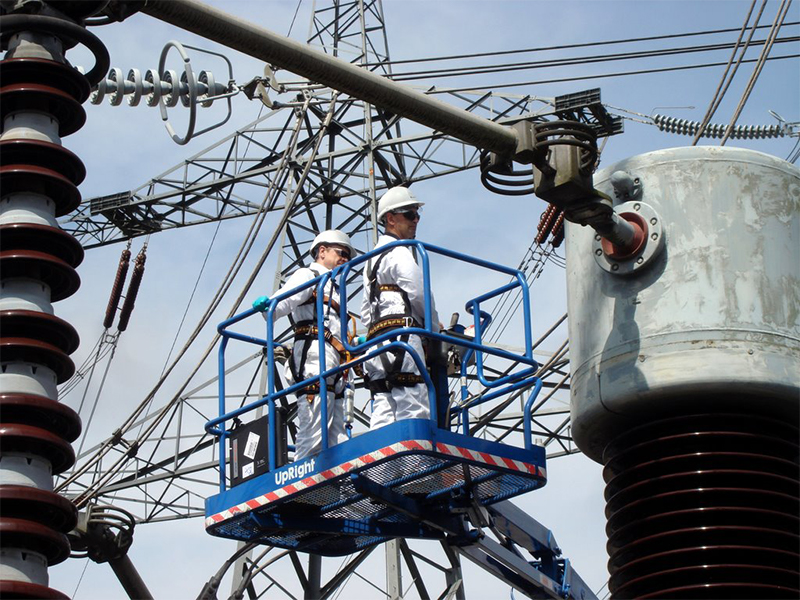In, ensuring security and environmental standards is more crucial than ever, particularly in industries that employ GHGs like sulfur hexafluoride. As a powerful greenhouse gas, SF6 has a much higher GWP than CO2, making its leak detection a top priority for companies that use it in electrical insulation, switchgear, and gas-insulated technologies. To effectively observe and manage these leaks, advanced technologies have emerged, with SF6 detection cameras for SF6 at the forefront.
These dedicated cameras play a vital role in detecting and quantifying SF6 leaks in multiple settings. By using advanced SF6 leak detection camera , these cameras can detect the distinct signature of SF6 gas, even at very low concentrations. As a result, they provide an effective and non-intrusive method for identifying gas leaks, helping companies comply with environmental laws while minimizing the risks associated with SF6 emissions. Understanding how these cameras for leak detection work and their importance in leak prevention is essential for businesses aiming to safeguard both the ecosystem and their operations.
Comprehending SF6 Gas along with Its Risks
Sulfur hexafluoride, or SF6, represents a colorless as well as unodorous substance commonly widely utilized throughout various sectors, especially within the electrical sector. Due to its excellent insulative features, it is commonly employed for gas-insulated switchgears and breakers. This gas is valued because of its capability to withstand high voltage levels, at the same time maintaining a low risk of electrical failures, making it vital in the trustworthy performance of electrical infrastructures.
Yet, while SF6 remains efficient within its applications, it brings considerable ecological plus health-related hazards. This gas maintains a elevated global warming potential, being far more powerful than carbon emissions in capturing heat in the atmosphere. These factors has led to initiated heightened rules pertaining to its utilization and handling. Additionally, SF6 could be damaging if breathed in in large volumes, whereas it remains normally secure in adequately aerated spaces as well as in the concentrations usually seen in industrial settings.

The challenges related to the management of SF6 mainly center on leak detection and reducing emissions. Since SF6 escaping gas contribute to global warming, it is increasingly essential for industries to adopt effective methods of monitoring. This encompasses the use of specific SF6 leak detection tools, which play a vital role in detecting and assessing leaks, ensuring that the substance is handled safely, and meeting environmental regulations.
How Identifying Camera Systems Function
Identifying camera systems specifically made for SF6 leak identification employ cutting-edge imaging methods to detect the existence of SF6 gas in different environments. Such cameras are fitted with IR sensors that can detect the unique light signature emitted by SF6. When SF6 is detected, the camera records this particular frequency, enabling it to visualize the leak, which might else go invisible by the naked eye.
These cameras function by analyzing the infrared light that interacts with SF6 molecules. As the gas expands and spreads into the air, it absorbs specific wavelengths of infrared radiation. The detection camera translates this data into a visual display, highlighting the areas where gas concentrations are highest. This real-time imaging allows for quick identification of leaks, facilitating swift repairs and minimizing environmental consequences.
Besides their ability to SF6, some detection cameras come with advanced capabilities such as heat imaging and video recording capabilities. Such enhancements additionally assist technicians in diagnosing issues and documenting findings. By offering distinct visual proof of a leak, identifying cameras serve a crucial role in maintaining safety and compliance in industries that use SF6.
Benefits of Using Detection Cameras for Leak Detection
Utilizing detection cameras for SF6 leak detection brings a considerable advantage in terms of safety. Such cameras allow technicians to identify leaks without directly exposing workers to hazardous gases. By taking images or videos of gas emissions, personnel can act swiftly to address any leaks while maintaining a safe distance, thus reducing the risk of accidents and ensuring a safer working environment.
One more key benefit is the accuracy and efficiency of detection cameras. Traditional methods of leak detection can be tedious and may rely heavily on manual inspection. In contrast, detection cameras can quickly scan large areas and pinpoint leaks that might be overlooked through conventional means. This not only saves time but also enhances the reliability of leak detection efforts, ensuring that even the smallest leaks are identified and addressed swifly.
Moreover, the use of detection cameras promotes cost savings in the long run. By enabling early detection of leaks, organizations can prevent more extensive damage and repair costs associated with larger leaks. Additionally, by minimizing SF6 emissions, companies can adhere to regulatory requirements and avoid potential fines. This combination of proactive leak management and compliance fosters a more sustainable approach to operations, benefiting both the environment and the bottom line.
